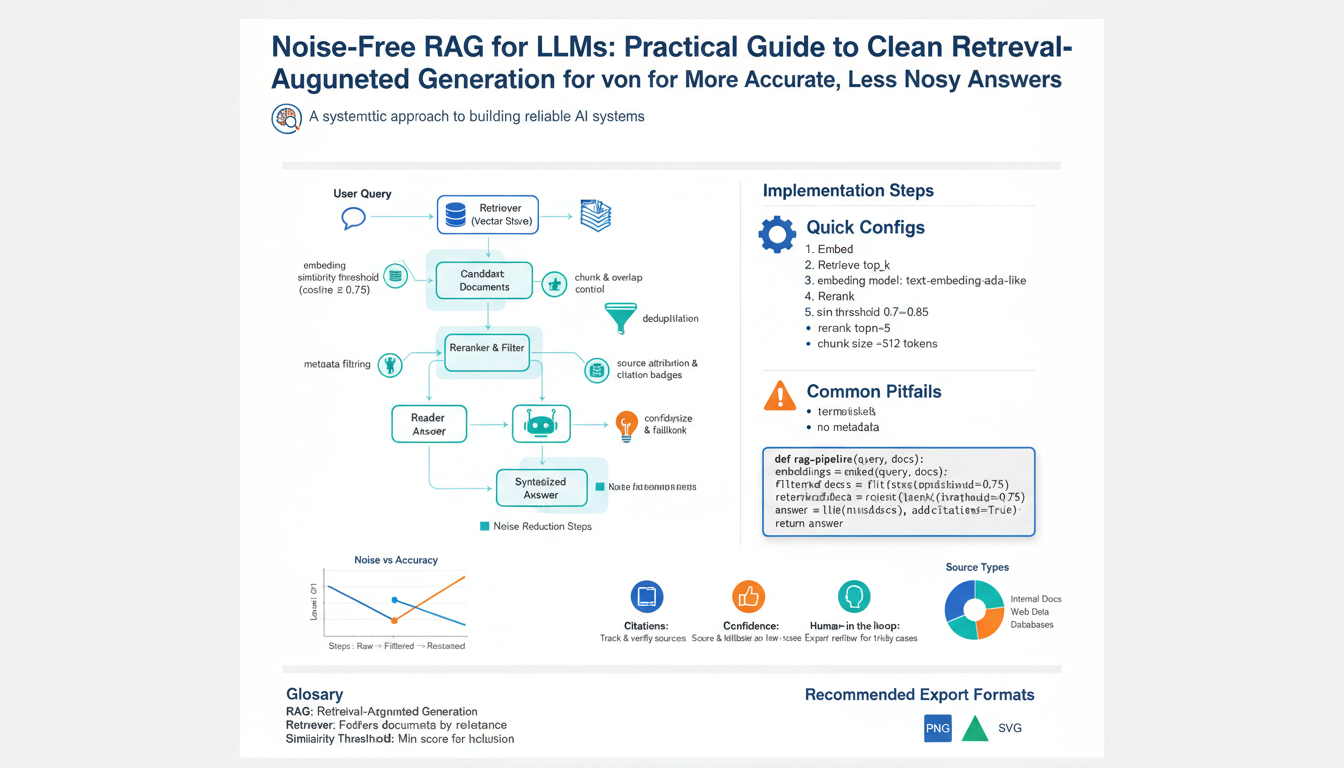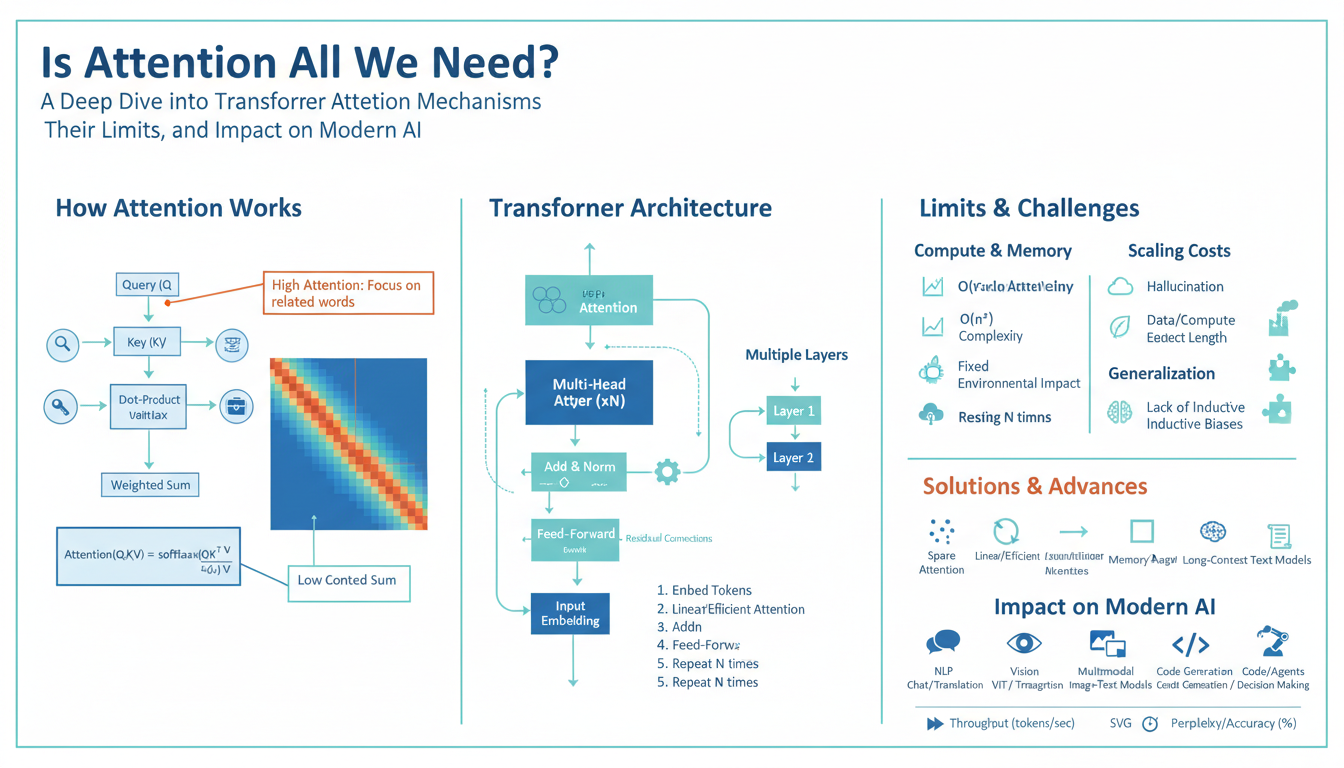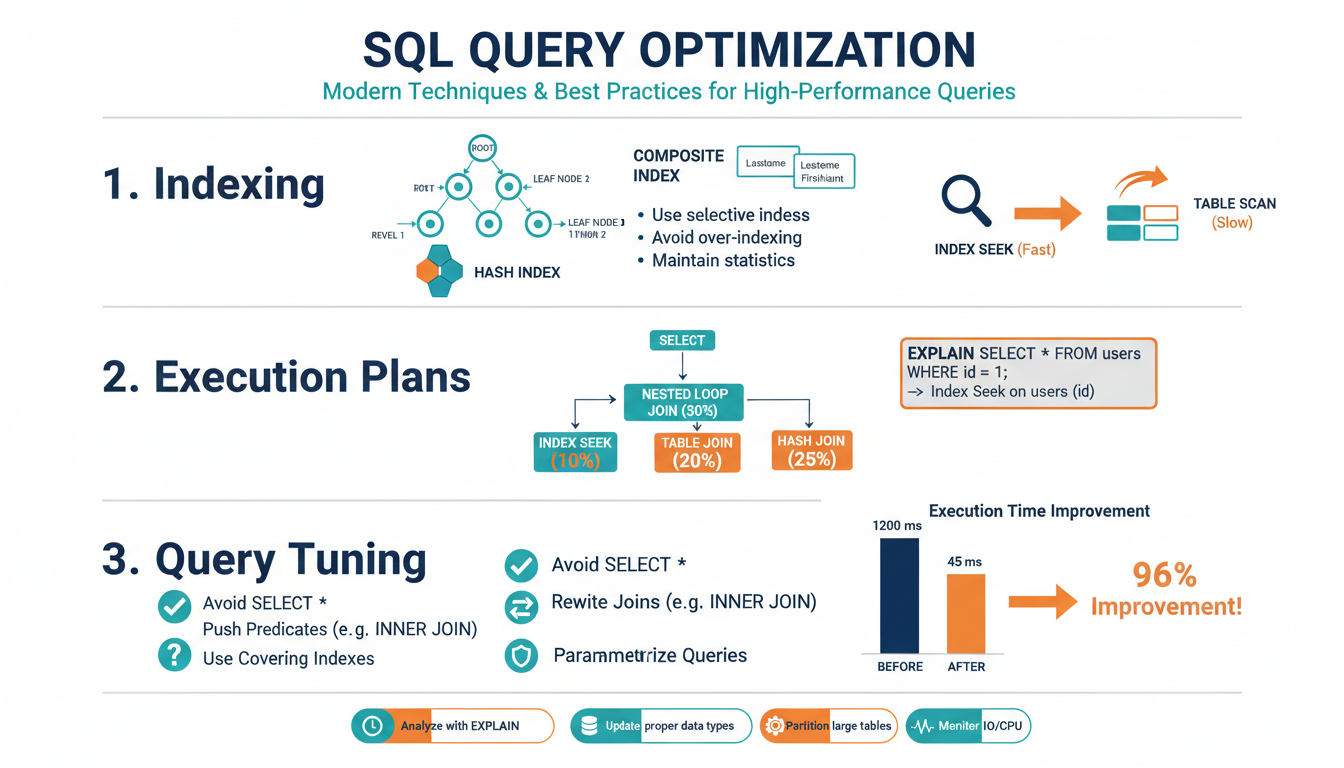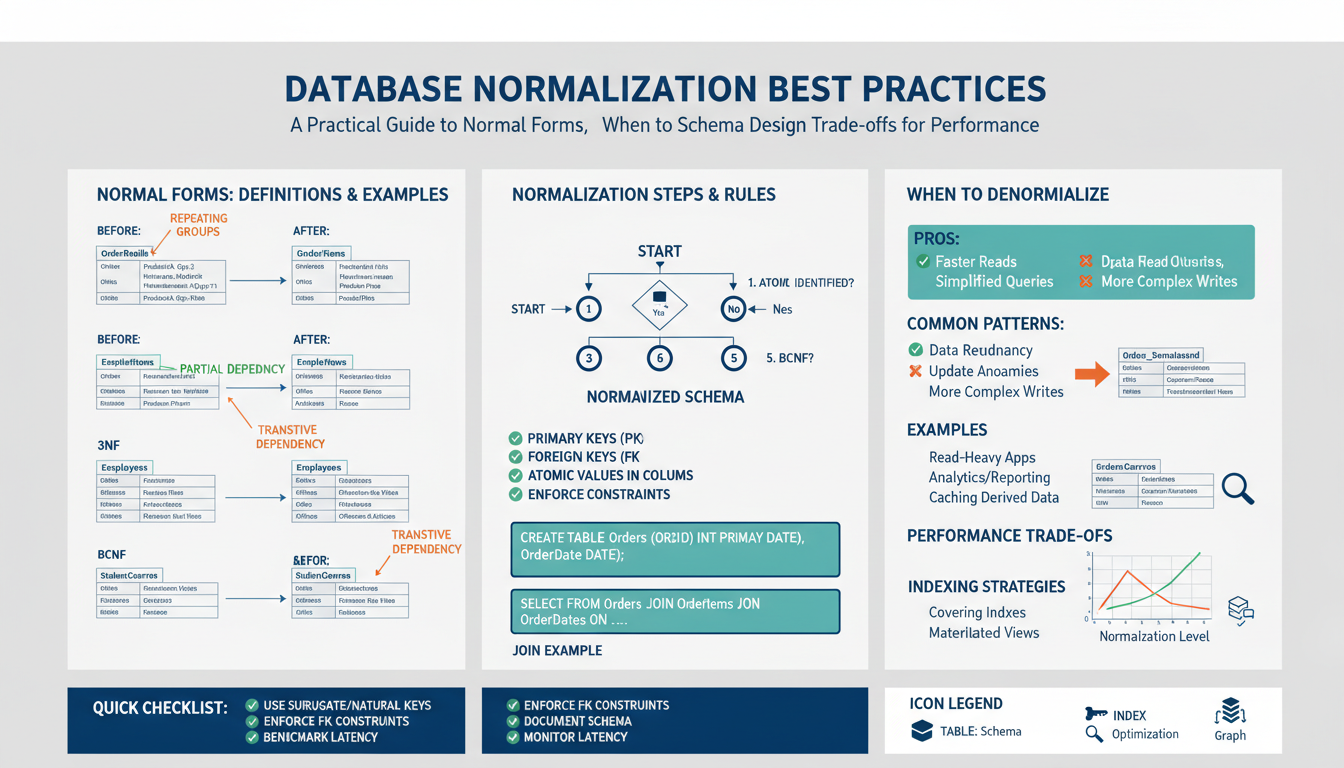Understanding the Origins of Transformer Models
The origins of transformer models trace back to a turning point in natural language processing (NLP) research. Before the advent of transformers, researchers and engineers primarily relied on recurrent neural networks (RNNs) and their sophisticated companions, long short-term memory networks (LSTMs), to manage tasks involving sequential data. These models, however, had major limitations. They often struggled with capturing long-range dependencies in text, were slow to train due to their sequential nature, and risked losing important information as inputs grew longer.
In 2017, a seminal paper titled “Attention Is All You Need” was published by researchers at Google Brain and the University of Toronto. This work proposed the transformer architecture, fundamentally rethinking how neural networks handle language. Unlike its predecessors, the transformer does not process input data in order, step-by-step. Instead, it uses a mechanism called “attention” to weigh the significance of every word in a sentence relative to the others, regardless of their position. This innovation allowed transformers to capture context more effectively and sped up the training process by enabling much more parallelization.
At the core of this architecture is the “self-attention” mechanism. With self-attention, each word in a sentence can look at every other word and decide which ones are important for understanding its meaning. For example, in the sentence “The cat the dog chased was happy,” the self-attention mechanism helps a transformer realize that “happy” describes “cat,” not “dog.” This capability revolutionized tasks like translation, where context across entire sentences is crucial.
The widespread adoption of transformers quickly followed, as more developers and organizations realized their power and flexibility. Major advancements like Google’s BERT or OpenAI’s GPT-3 have built upon this architectural innovation, leading to unprecedented improvements in everything from machine translation and summarization to chatbots and automated content creation. The transformative nature of these models stems directly from the shift in thinking introduced by the transformer’s origins: prioritizing relationships between words above the sequence itself, and enabling far greater efficiency in training and deployment.
If you’re interested in a deeper dive into the historical context, you can also explore this article from Nature, which provides a comprehensive overview of the rapid evolution of NLP and the transformer’s pivotal role.
The Core Components of Transformer Architecture
A transformative leap in natural language processing, the Transformer architecture is composed of several core components that work together in a unique, parallelized fashion. Understanding these building blocks gives crucial insight into why this architecture outperforms previous approaches like RNNs and LSTMs. Let’s explore each of these essential components in detail:
1. Input Embeddings
Text data, by nature, is made up of words or tokens, which need to be converted into a format a neural network can understand—namely, numerical vectors. Transformers achieve this through embedding layers. Each word or subword token is mapped to a high-dimensional vector space, capturing its semantic meaning. These embeddings can be initialized randomly and then learned during training, or pre-trained embeddings such as GloVe or Word2Vec may be used as the starting point. This process is crucial because it allows the model to process nuances in language, subtle differences in context, and relationships between words.
2. Positional Encoding
Unlike sequential models, Transformers process all tokens simultaneously. However, this parallelization means the model needs a way to understand the order of tokens—otherwise, sentences like “cat sat on the mat” and “mat sat on the cat” would look the same. Positional encoding tackles this by adding unique information about each token’s position in the input sequence. Typically, this involves adding sine and cosine functions of different frequencies to each embedding, a technique detailed in the groundbreaking Attention is All You Need paper. This enables the model to retain the sequence information without relying on recurrence.
3. Multi-Head Self-Attention Mechanism
Arguably the most revolutionary element of the Transformer is its self-attention mechanism. At its core, self-attention enables the model to weigh and prioritize the relationships between all tokens in a sequence—even for words that are far apart. This is accomplished through three main vectors: Query, Key, and Value, which are calculated for each token. The attention score for any two tokens is computed by comparing their Query and Key vectors, allowing the model to dynamically focus on relevant information in context.
By implementing multi-head attention, the model projects these Q, K, and V vectors into multiple subspaces simultaneously. This means the network can capture numerous types of relationships in parallel—for example, understanding both grammatical structure and long-distance dependencies in a single pass. For a deeper technical dive, the Illustrated Transformer guide visually breaks down this concept with clear diagrams and step-by-step explanations.
4. Feed-Forward Neural Networks
After the multi-head self-attention layer, each token’s representation is passed through a position-wise fully connected feed-forward neural network. This means the same feed-forward network is applied to each position independently. Consisting typically of two linear transformations with a non-linear activation (such as ReLU) in between, these layers help the model transform and refine its internal representations, adding an extra dose of abstraction and learning capability. The parallel application ensures efficiency, one of the Transformer’s defining strengths.
5. Residual Connections and Normalization
Each sub-layer in the Transformer (both the attention and the feed-forward portions) is embedded within a residual connection structure. This means that the input to each sub-layer is added to its output, a design borrowed from ResNet architectures. Such skip connections aid in stabilizing training and allow for much deeper networks by preventing the common vanishing gradient problem. After each residual addition, the output is then normalized using layer normalization, ensuring consistent input distributions for subsequent layers.
6. Stacking Layers: Encoders and Decoders
The Transformer is typically comprised of multiple encoder and decoder layers stacked on top of one another. Each encoder layer processes its input sequence using the steps above, while decoder layers are slightly modified to attend to both previous decoder tokens and encoder outputs, enabling sophisticated sequence-to-sequence tasks like translation and summarization. For a comprehensive analysis of encoder-decoder architecture, the Towards Data Science platform offers a range of accessible, up-to-date articles.
Together, these core components create the architectural blueprint that has powered advances in models like BERT, GPT, and T5. By combining efficient information flow, rich modeling of context, and massive scalability, the Transformer architecture continues to drive innovation across language understanding tasks.
How Self-Attention Works and Why It Matters
Self-attention is the cornerstone of the transformer architecture and represents a game-changing advancement in natural language processing (NLP). At its core, self-attention allows a model to examine and weigh every word in a sentence relative to every other word, regardless of their position. This stands in contrast to earlier models like RNNs and LSTMs, which processed sequences sequentially and often struggled to capture long-range dependencies.
How Does Self-Attention Work?
To understand how self-attention operates, let’s break it down step by step:
- Representation of Words: Each word in the input sequence is transformed into a rich vector representation, known as an embedding. For instance, in the sentence “The cat sat on the mat,” each word receives its own vector.
- Calculating Scores: The model computes a score for every pair of words using three vectors: the query (Q), key (K), and value (V). This involves taking the dot product between the query vector of a word and the key vectors of all other words in the sentence. This produces a set of attention scores which measure how much one word should attend to another.
- Softmax Normalization: The scores are then passed through a softmax function to convert them into probabilities. This ensures that the sum of attention weights for each word adds up to one, making them easier to interpret as a distribution of focus.
- Weighted Sum: Using these attention weights, a weighted sum of value (V) vectors is computed for each word. This means that a word’s final representation is now a blend of the entire sentence—but weighted according to its learned importance for each context.
The Significance of Self-Attention in NLP
The ability to relate every word to every other word allows transformers to capture nuances such as context, ambiguity, and long-range relationships—critical for understanding human language. For example, in the sentence, “The animal didn’t cross the street because it was too tired,” the word “it” could be ambiguous. Self-attention lets the model consider both “animal” and “street” to determine that “it” refers to “animal.”
Unlike older architectures where distant words’ influences diminished, self-attention gives equal opportunity to all words, bypassing sequential bottlenecks. This ability to model complex dependencies efficiently is a key reason transformer models like Google’s BERT and OpenAI’s GPT have led to breakthroughs in tasks like text classification, translation, and question answering.
Real-World Example: Machine Translation
Consider translating a complex sentence from English to French. The position of words might change, and understanding which words depend on one another is crucial. Self-attention enables the model to “look back” and learn subtle relationships, ensuring accurate translation even when dealing with idioms or nuanced phrases. The result is translations that are more fluent and semantically accurate compared to prior methods.
For those seeking a deeper technical exploration with mathematical details and animations, the “Illustrated Transformer” by Jay Alammar is an outstanding resource.
In summary, self-attention’s ability to dynamically adjust the focus across the entire sequence lies at the heart of why transformers work so well for language. Its flexibility and scalability continue to push the boundaries of what’s possible in NLP, opening new doors for applications and research.
Transformers vs. Traditional Sequence Models
To truly appreciate the impact transformers have had on natural language processing, it’s important to understand how they differ from traditional sequence models like recurrent neural networks (RNNs) and long short-term memory networks (LSTMs). Traditional sequence models process data sequentially, meaning each word or token is handled in order. This sequential process creates dependencies between steps, making computations slower and sometimes causing difficulties when trying to capture relationships between words that are far apart in a sentence or document.
For example, if a model needs to understand the connection between “the cat” at the start of a sentence and “it” much later, RNNs and LSTMs can struggle due to what’s called the vanishing gradient problem. This issue hinders their ability to remember long-range dependencies, often leading to loss of context and reduced performance on complex language tasks.
Transformers, introduced in the groundbreaking paper “Attention is All You Need” by Vaswani et al. at Google Brain, revolutionized this approach. Instead of processing words one by one, transformers use a mechanism called self-attention. This allows every word in a sentence to immediately reference every other word, regardless of their position. In practice, this means transformers can:
- Analyze entire sentences or paragraphs in parallel, leading to significant improvements in computational speed and scalability.
- Capture long-range dependencies more effectively, maintaining context and nuance throughout a document.
- Better handle complex structures in language, such as ambiguous references or intricate grammar.
Consider the example sentence: “The book that the professor who the student admired wrote was on the table.” Traditional models might lose track of which noun “was” relates to, while transformers leverage self-attention to keep all parts of the sentence in focus, resulting in more accurate interpretations.
This architectural advantage also enables transformers to power large-scale models like GPT (Generative Pre-trained Transformer) and BERT (Bidirectional Encoder Representations from Transformers). These models now underpin many of today’s most advanced language applications, from chatbots to translation tools, making transformative impacts in industry and academia alike.
For more in-depth comparisons between these architectures, check out this overview from DeepLearning.AI.
Major Breakthroughs Enabled by Transformers
The introduction of transformers has sparked a host of groundbreaking advances across natural language processing (NLP) and beyond. Here’s a closer look at the major breakthroughs enabled by this cutting-edge architecture:
Unprecedented Language Understanding: BERT
The launch of BERT (Bidirectional Encoder Representations from Transformers) by Google marked an extraordinary milestone in 2018. Unlike previous models limited to processing text in a single direction, BERT introduced a bidirectional approach, allowing the model to grasp word context from both left and right sides. This resulted in dramatic improvements in tasks like question answering and sentence classification. For instance, BERT-powered systems now more accurately extract answers from documents—and even outperform humans on certain benchmarks such as the Stanford Question Answering Dataset (SQuAD). Companies worldwide rapidly adopted BERT for optimizing their search engines, chatbots, and customer support tasks.
Human-Like Text Generation: GPT Series
OpenAI’s GPT models (Generative Pre-trained Transformers) revolutionized text generation. Trained on vast internet corpora, GPT-3 and its successors can produce coherent articles, poetry, emails, and even computer code—sometimes indistinguishable from human writing. Professionals leverage GPT models to summarize legal documents, assist with creative writing, and automate customer interactions. The step-change in fluency and contextuality showcased by these models has redefined expectations for AI content creation and communication.
Massive Multilingual Power: mT5 and XLM-R
Before transformers, building robust multilingual systems was clunky and required separate models for each language. Innovations like mT5 (Multilingual Text-to-Text Transfer Transformer) and XLM-R (Cross-lingual Language Model – RoBERTa) made it possible to handle dozens of languages with a single model. These architectures enable cross-lingual transfer—where knowledge learned from one language is applied to others—empowering translation services, global sentiment analysis, and cross-border business tools. Now, businesses can deploy seamless language technology in international markets without bespoke engineering per language.
Efficient and Scalable Model Training
Transformer-based models are inherently parallelizable, allowing them to scale efficiently on modern hardware such as GPUs and TPUs. This unlocks larger datasets and more complex tasks. Projects like BigBird and Reformer have further improved transformer efficiency, making it viable to process longer documents and larger data streams. The result: rapid, real-time language understanding and generation that’s reshaping everything from automated news aggregation to streamlined medical record analysis.
Foundation Models for Diverse Tasks
Transformers have given rise to a new era of “foundation models”—large, pre-trained architectures fine-tuned for specific applications. As explained by Stanford researchers, these models serve as a universal substrate for tasks like image captioning, code generation, and conversational agents. Rather than building new architectures from scratch for each problem, developers can now adapt a single robust transformer core, vastly accelerating AI innovation in fields like healthcare, education, and finance.
By enabling these diverse breakthroughs, transformers have transformed the very landscape of what’s possible in NLP and artificial intelligence.
Popular Applications of Transformers in NLP
Transformers have fundamentally changed the landscape of natural language processing by introducing architectures that excel at understanding and generating human language with unprecedented accuracy and speed. Below, we explore some of the most prominent and widely adopted applications of transformers in today’s NLP ecosystem:
1. Machine Translation
One of the earliest and most impactful applications of transformer models is in automated translation between languages. Traditional methods relied heavily on sequential models like RNNs, which struggled with long sentences and complex grammatical constructions. Transformers, with their self-attention mechanisms, allow for more nuanced context understanding across an entire sentence or document.
- How it works: A transformer processes input text in the source language, analyzing each word in the context of every other word, and then generates text in the target language. This parallel processing is much faster than earlier word-by-word approaches.
- Examples: Modern translation services such as Google Translate and DeepMind are powered by transformer-based architectures, leading to substantial improvements in translation quality.
2. Text Summarization
Automatic summarization condenses long articles or documents into shorter, coherent summaries while retaining key points. Transformer-based models excel here because they can capture long-range dependencies in the text, understanding relationships across an entire passage, which is essential for extracting main ideas and avoiding redundancy.
- Abstractive vs. extractive summarization: Transformers have enabled more powerful abstractive approaches, where new summary sentences are generated, as opposed to just extracting phrases from the source.
- Real-world impact: News aggregators like IBM Watson and tools like GPT-powered summarizers offer quick, coherent digests of lengthy content.
3. Sentiment Analysis & Text Classification
Understanding the sentiment behind reviews, tweets, and customer feedback is vital for businesses and researchers. Transformers trained on massive datasets can classify text by sentiment (e.g., positive, negative, neutral) or by topic and intent with high accuracy.
- Business intelligence: Companies leverage transformer models, such as those behind Google Cloud Natural Language API, to gauge public opinion and improve products or services.
- Social media monitoring: Agencies can track and analyze large volumes of social media posts in real time, revealing important trends and potential crises before they escalate.
4. Question Answering & Conversational AI
Transformers power state-of-the-art question-answering systems that not only match questions with relevant passages but also “understand” context deeply to generate precise and informative answers. This technology lies at the heart of modern virtual assistants such as Siri, Alexa, and Google Assistant.
- Open-domain QA: Models like BERT and GPT retrieve and synthesize answers from large, unstructured datasets like Wikipedia.
- Customer support: Many chatbots and automated help desks use transformer-based models to provide accurate, context-aware responses and route complex issues to human agents when needed.
5. Text Generation and Creativity
One of the most headline-grabbing applications of transformers is creative text generation. Models such as OpenAI’s GPT series are capable of drafting essays, composing poetry, generating code, and producing dialogue, sometimes indistinguishable from that written by humans.
- Content creation: Tools for marketers, bloggers, and writers leverage transformers to brainstorm ideas, complete articles, or rewrite drafts in different tones and styles. The New York Times has covered how such models are shaping digital journalism and marketing.
- Programming assistance: Tools like GitHub Copilot use transformers to auto-complete or explain code, revolutionizing how developers work.
These popular applications only scratch the surface of what transformers make possible. As the technology matures, we can expect ever more innovative and practical uses across industries, driven by deeper language understanding and flexible model architectures. To learn more about the science behind transformers, Oxford Bibliographies provides an extensive overview of the theory and practice in NLP.



